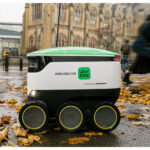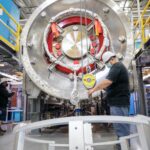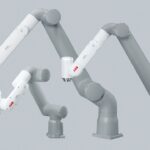With the advent of AI and Machine learning and its use for various industrial and economic purposes, domestic tasks seem to have joined the fray.
This is why the push for further development of the technology has reached the heightened peak.
With all the hassles of the day, the stress of work, some domestic chores need a helping hand, and they may be far-fetched. The advent of automated machines and robots may have solved the missing link.
Imagine having your own robotic chef, at your beck and call, ready to cook what you want to your taste, just at the push of the button,
In a new study published by npj Science of Food, Columbia Engineers have decided to make things easier with the invention of software-controlled robotic lasers that not only cook food with unparalleled precision; they create an entirely new, customized way to cook a tasty meal. The engineers have drafted the use of lasers for cooking and 3D printing technology for assembling foods.
Under the tutelage of Hod Lipson, a Professor of Mechanical Engineering and his “Digital Food” team of Creative Machines Lab, the team has in recent times focused on building a fully autonomous digital personal chef. The group has since the year 2017 been developing 3D-printed foods, and ever since then food printing has evolved to multi-ingredient prints, while being explored by researchers and a few commercial companies.
“We noted that, while printers can produce ingredients to a millimeter-precision, there is no heating method with this same degree of resolution,” said Jonathan Blutinger, a PhD in Lipson’s lab who led the project. “Cooking is essential for nutrition, flavour, and texture development in many foods, and we wondered if we could develop a method with lasers to precisely control these attributes.”

Picture: Chicken being cooked by a blue laser. Light is being directed by two software-controlled mirror galvanometers. Credit: Jonathan Blutinger/Columbia Engineering
The Lipson team explored various methods of cooking; they exposed blue light (445 nm) and infrared light (980 nm and 10.6 µm) to chicken, using them as a model food system. Chicken samples (3 mm thick by ~1in2 area) were printed
as a test bed, while the team assessed a range of parameters including cooking depth, colour development, moisture retention, and flavour differences between laser-cooked and stove-cooked meat. It was discovered that laser-cooked meat shrinks 50% less, retains double the moisture content, and shows similar flavour development to conventionally cooked meat.
“In fact, our two blind taste-testers preferred laser-cooked meat to the conventionally cooked samples, which shows promise for this burgeoning technology,” Blutinger said.
With both Lipson and Blutinger showing their excitement on the prospect of this new technology that has fairly low-tech hardware and software components, they jointly opined that a sustainable ecosystem is not yet available to support the technology. Lipson himself noted that “what we still don’t have is what we call ‘Food CAD,’ sort of the Photoshop of food. We need a high level software that enables people who are not programmers or software developers to design the foods they want. And then we need a place where people can share digital recipes, like we share music.”
Still, says Blutinger, “Food is something that we all interact with and personalize on a daily basis–it seems only natural to infuse software into our cooking to make meal creation more customizable.”
Reference: “Precision cooking for printed foods via multiwavelength lasers” by Jonathan David Blutinger, Alissa Tsai, Erika Storvick, Gabriel Seymour, Elise Liu, Noà Samarelli, Shravan Karthik, Yorán Meijers and Hod Lipson, 1 September 2021, npj Science of Food.
DOI: 10.1038/s41538-021-00107-1
Discover more from TechBooky
Subscribe to get the latest posts sent to your email.







